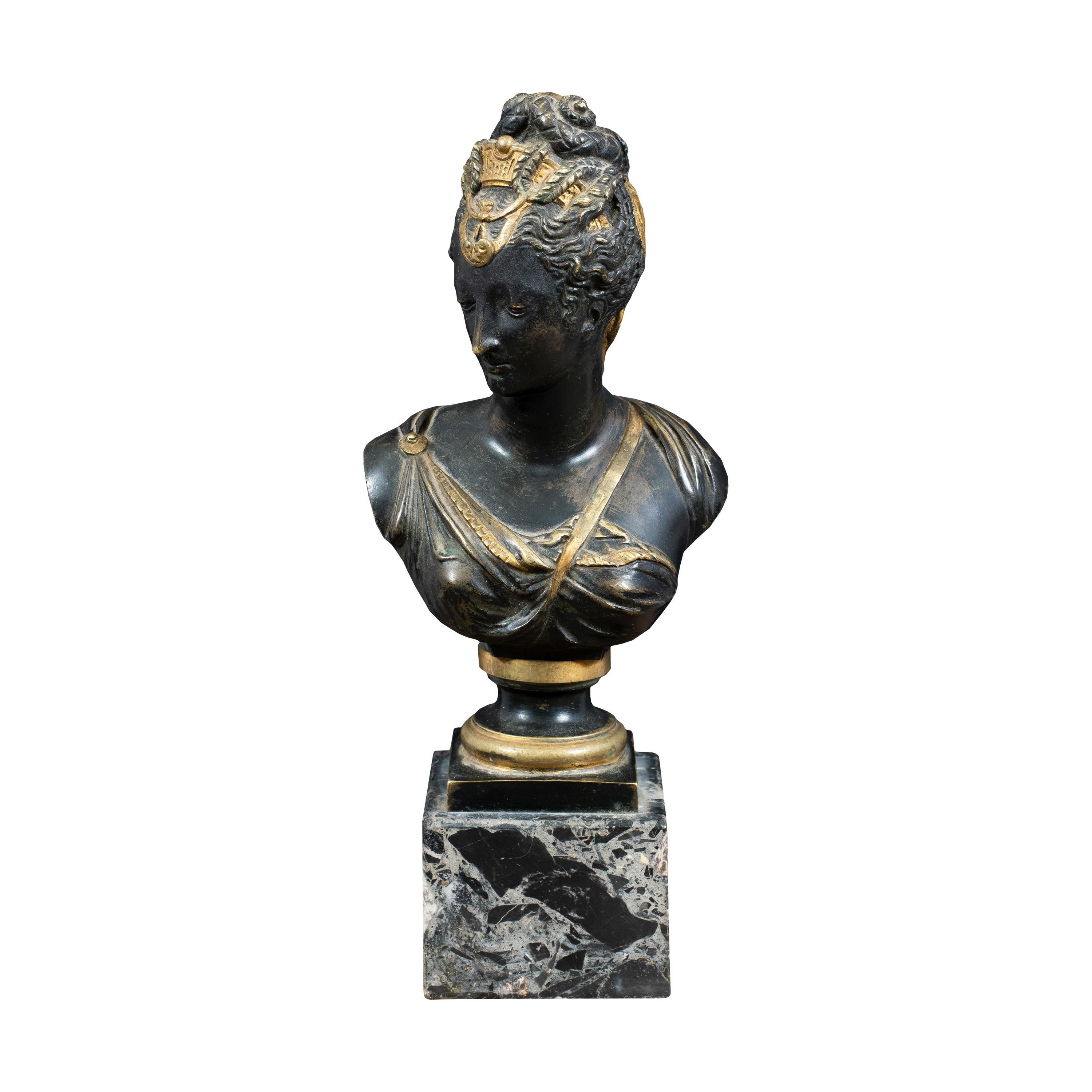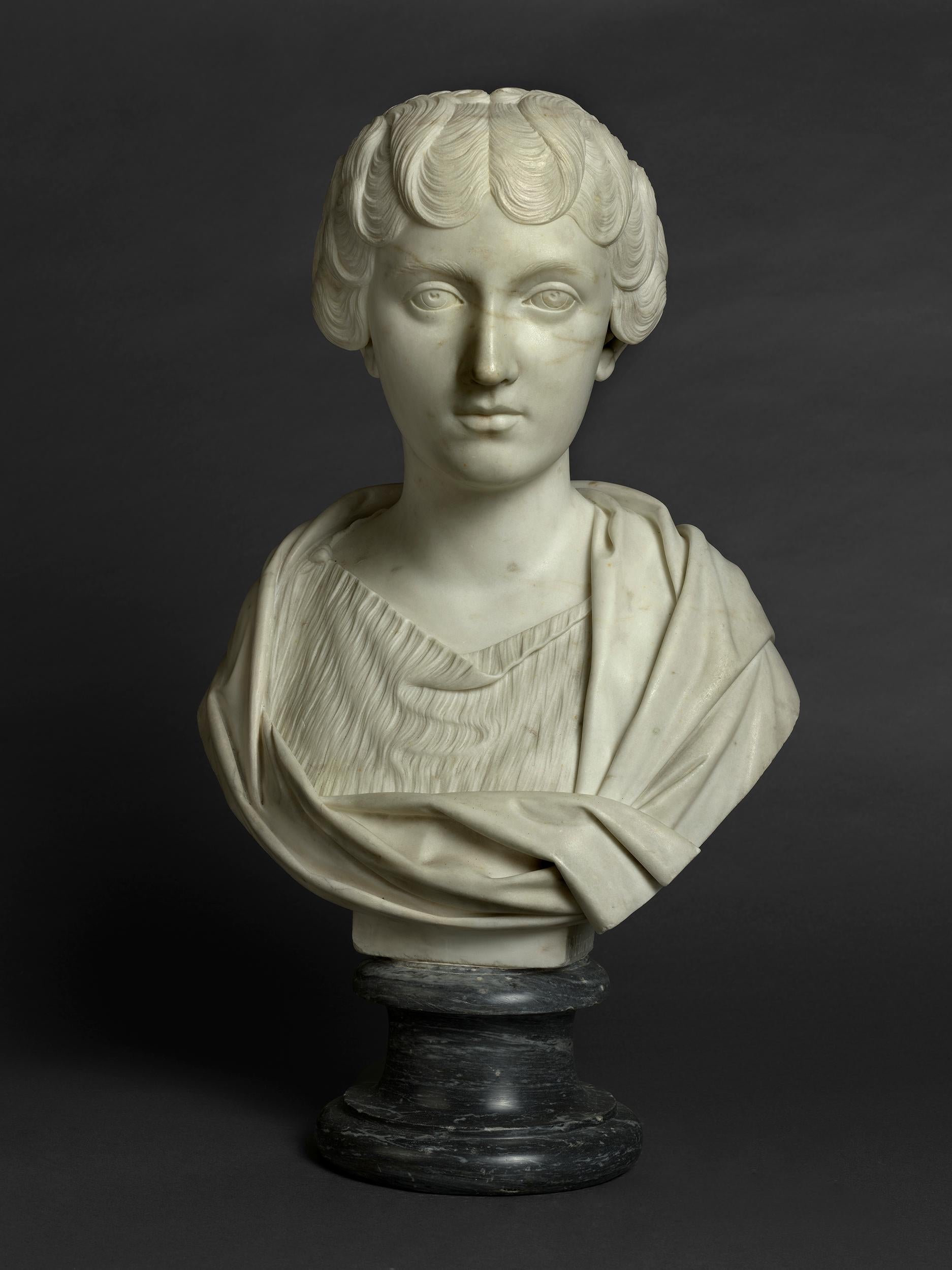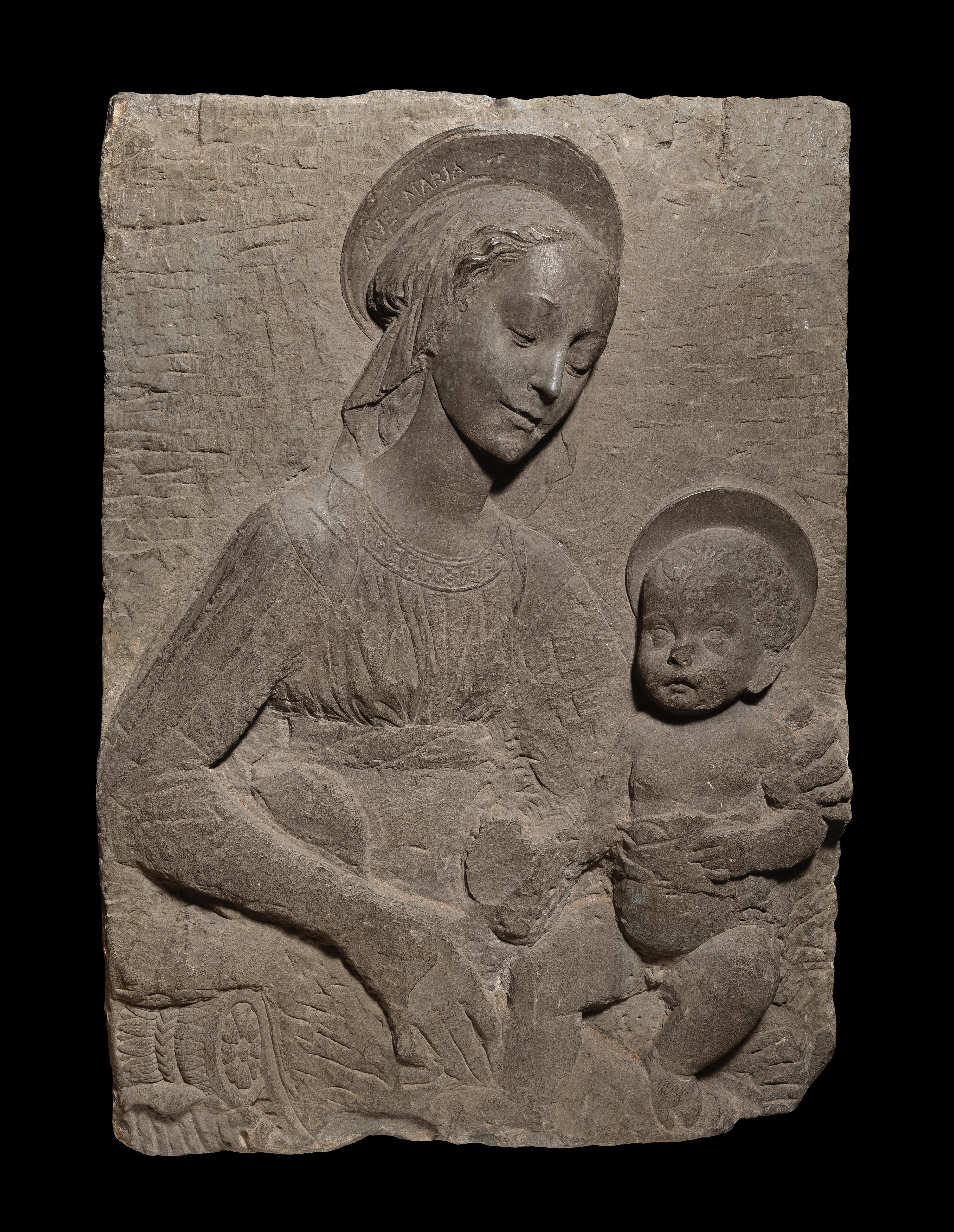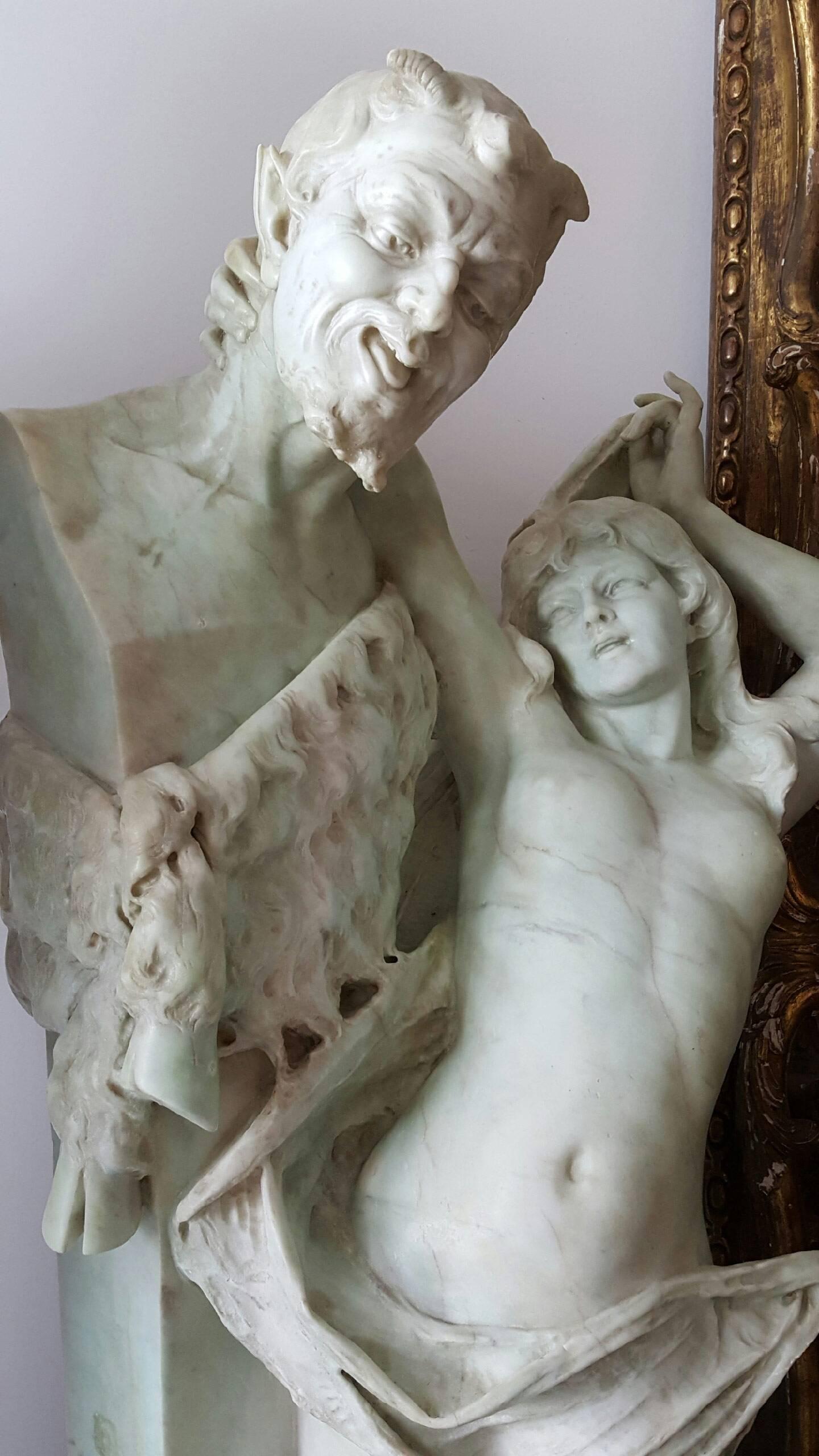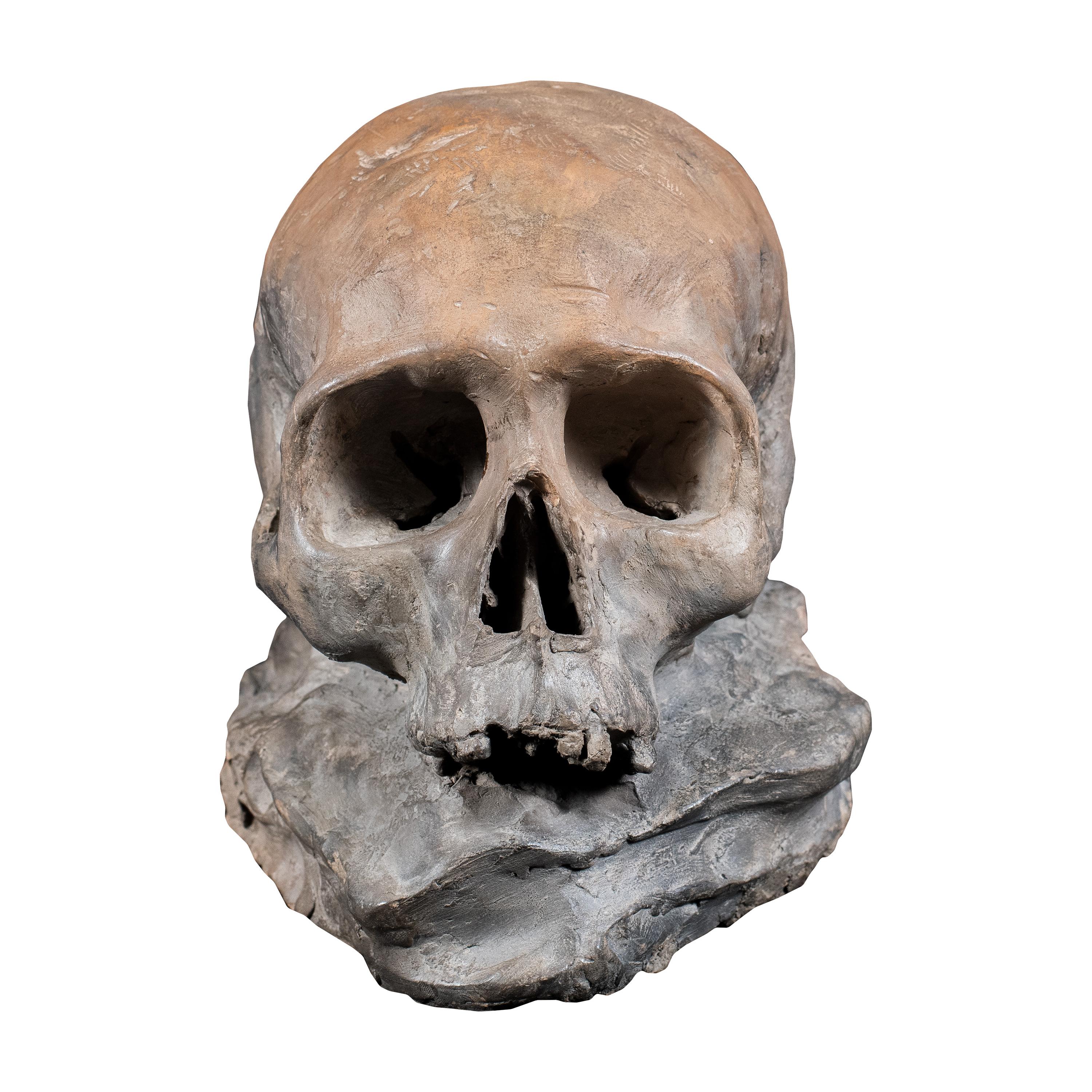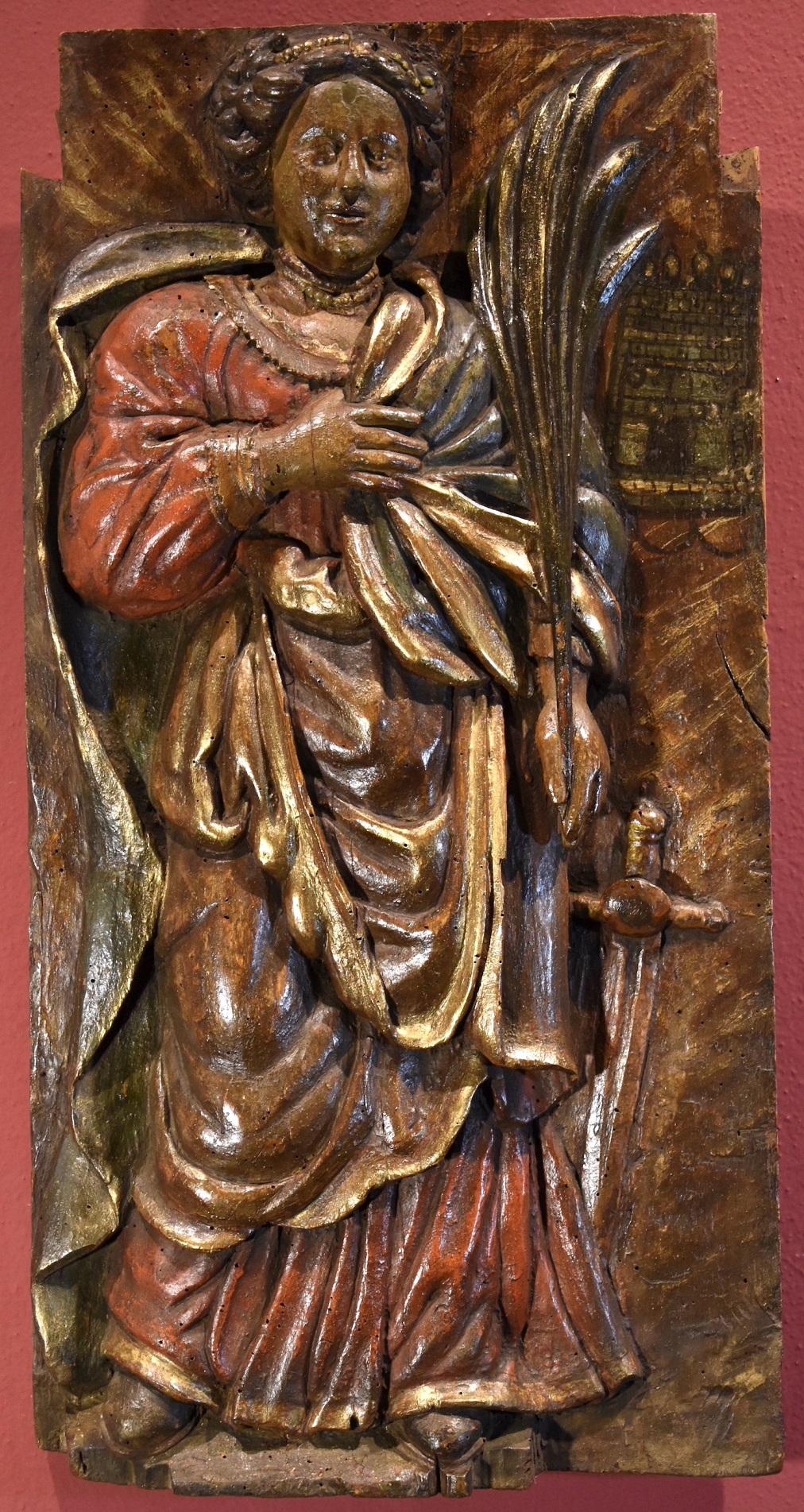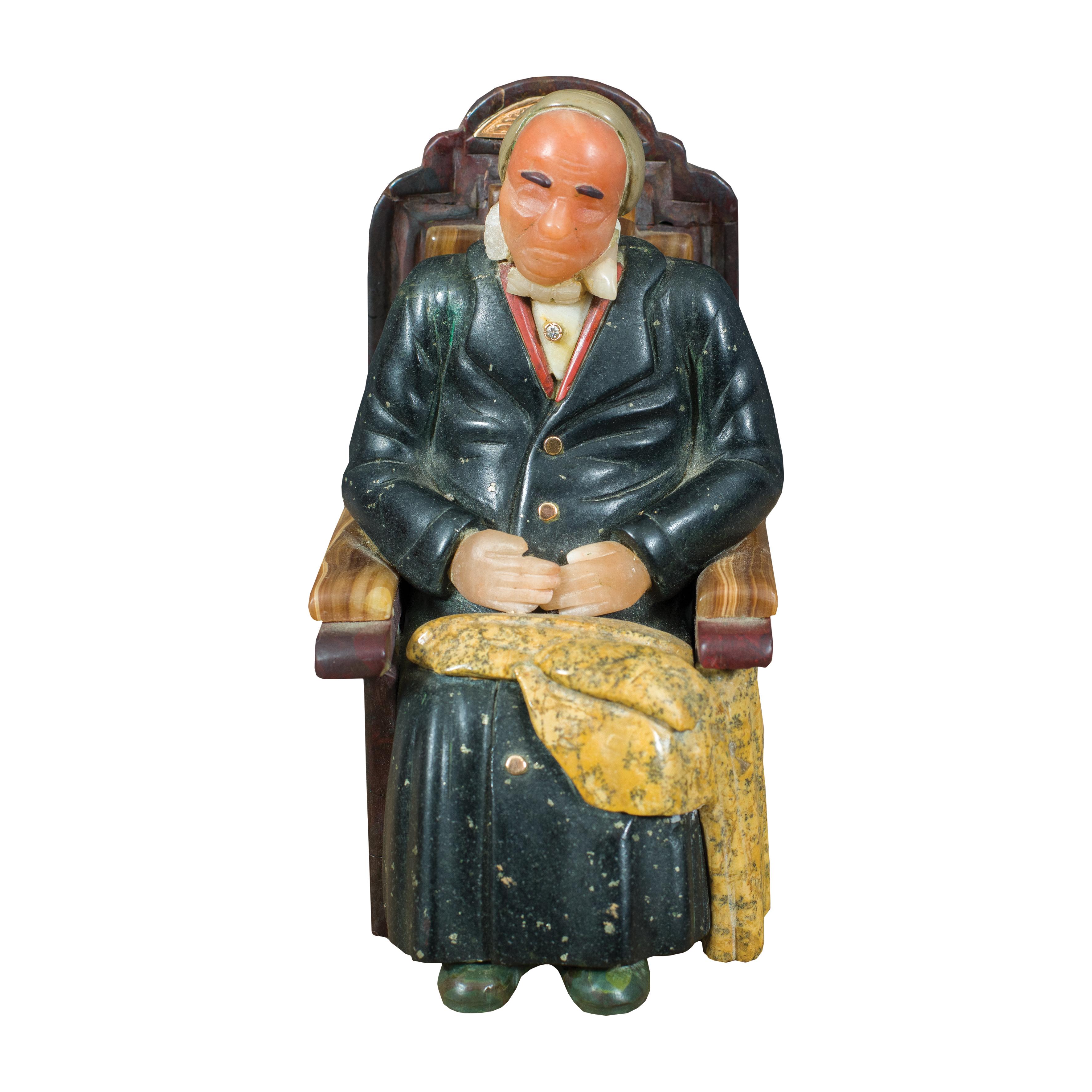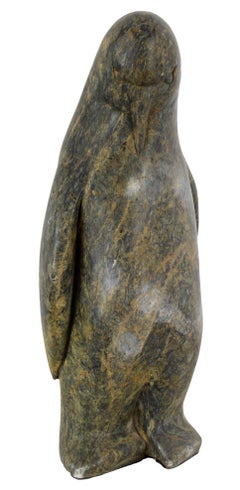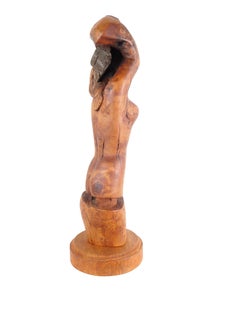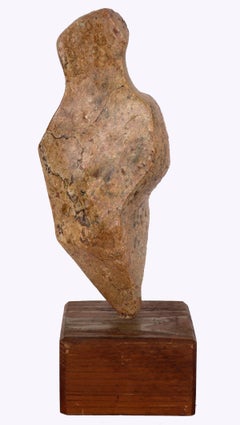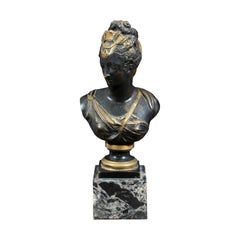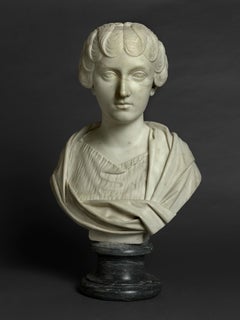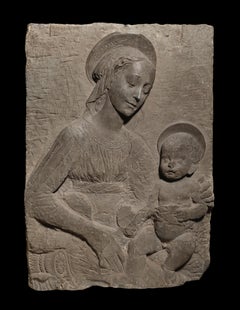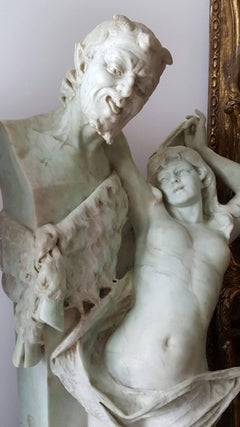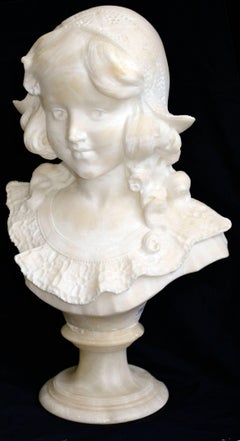
Young Girl, 1898
View Similar Items
Want more images or videos?
Request additional images or videos from the seller
1 of 11
Umberto BiaginiYoung Girl, 18981898
1898
Price:$1,000
$2,500List Price
About the Item
- Creator:Umberto Biagini (Italian)
- Creation Year:1898
- Dimensions:Height: 18 in (45.72 cm)Width: 11 in (27.94 cm)Depth: 7 in (17.78 cm)
- Medium:
- Movement & Style:
- Period:
- Condition:some small nicks to bust and a slight hairline crack at top of the head which is very shallow, large chip missing to base.
- Gallery Location:Soquel, CA
- Reference Number:Seller: RS38401stDibs: LU5422259513
About the Seller
5.0
Platinum Seller
Premium sellers with a 4.7+ rating and 24-hour response times
Established in 1986
1stDibs seller since 2014
2,963 sales on 1stDibs
Typical response time: 1 hour
Authenticity Guarantee
In the unlikely event there’s an issue with an item’s authenticity, contact us within 1 year for a full refund. DetailsMoney-Back Guarantee
If your item is not as described, is damaged in transit, or does not arrive, contact us within 7 days for a full refund. Details24-Hour Cancellation
You have a 24-hour grace period in which to reconsider your purchase, with no questions asked.Vetted Professional Sellers
Our world-class sellers must adhere to strict standards for service and quality, maintaining the integrity of our listings.Price-Match Guarantee
If you find that a seller listed the same item for a lower price elsewhere, we’ll match it.Trusted Global Delivery
Our best-in-class carrier network provides specialized shipping options worldwide, including custom delivery.More From This Seller
View AllVintage Abstract Figurative Modern Alabaster Sculpture -- Torso of Woman #106
By Doris Warner
Located in Soquel, CA
Modern abstract sculpture of a woman's torso, signed and dated Warner in stone and marker pen, "Warner '80" and "Warner #106". Dimensions: 16"L x 11"W x 9"H.
Listed artist Doris Ann...
Category
1980s Post-Modern Figurative Sculptures
Materials
Alabaster
"Penguin" - Steatite Stone Hand Carved Sculpture, St. Lawrence Island Eskimo Art
Located in Soquel, CA
"Penguin" - Steatite Stone Hand Carved Sculpture, St. Lawrence Island Eskimo Art
Dynamic steatite stone sculpture of a standing penguin. The sculpture prop...
Category
1970s Post-Modern Figurative Sculptures
Materials
Stone
$2,120 Sale Price
20% Off
Burled Maple Sculpture Nude Woman with Arms Over Head and Stone
Located in Soquel, CA
Burled Maple Sculpture Nude Woman with Arms Over Head
Beautiful burled walnut sculpture of a nude woman. The woman stands with her arms stretched over her head. Behind her a dark st...
Category
Mid-20th Century Post-War Figurative Sculptures
Materials
Stone
Venus, Modern Abstract Figurative Sculpture #37
By Doris Warner
Located in Soquel, CA
Wonderful small scale abstract figurative stone Venus sculpture by Doris Ann Warner (American, 1925-2010), 1975. A highly abstracted female form is expressed through the organic, fl...
Category
1970s Modern Figurative Sculptures
Materials
Sandstone
NYDIA, THE BLIND FLOWER GIRL OF POMPEII Marble Sculpture 1856-1870
Located in Soquel, CA
Randolph John Rogers (American, 1825 - 1892) Randolph Rogers' Nydia, the Blind Flower Girl of Pompeii debuted in 1856 to critical and public acclaim, solidifying Rogers’ position as a pre-eminent American sculptor and it remains one of the artist’s most celebrated works today. The subject of Nydia is drawn from Edward Bulwer-Lytton's The Last Days of Pompeii 1834. After touring the ruins of the ancient city in 1833, and inspired by the stories of blinding volcanic ash, he composed the tale of Nydia, a slave who led her master, Glaucus, to safety. Rogers depicts Nydia at the moment that she and Glaucus have become separated in their perilous journey through the rubble and Nydia seeks familiarity in the surrounding chaos, her distress evident in her pained expression. The grace of the sculpture is at odds with the turmoil portrayed; a toppled Corinthian capital lies at her feet and obstructs her next step, indicated by the tilt of her back foot and grip on her walking stick. Examples of this model can be found in major American collections, including The Metropolitan Museum of Art, the Art Institute of Chicago, the Detroit Institute of Arts, the Los Angeles County Museum of Art, and the Museum of Fine Arts, Boston.
Literature, Millard F Rogers, Jr. Randolph Rogers, American Sculptor in Rome. University of Massachusetts Press, 1971, American Figurative Sculpture in the Museum of Fine Arts Boston. Museum of Fine Arts, Boston, 1986. Joyce K Schiller. "Nydia, A Forgotten Icon of the Nineteenth Century." Bulletin of the Detroit Institute of Arts,
Born in Waterloo, New York, Randolph John Rogers became an expatriate* sculptor of idealized figures, portraits, and commemorative works in Neo-Classical* and Realist* styles. He worked in clay, plaster, marble and bronze, and lived both in Italy and the United States. He made 167 examples of Nydia in two sizes (varies depending on base height) 36" and 54'.
Rogers was raised in Ann Arbor, Michigan, and as a young man did woodcuts* for the local newspaper, The Michigan Argus, and also worked as a baker's assistant and a dry goods clerk. In 1847, he moved to New York City, where he hoped to find work as an engraver*, but failing to do so, worked in a dry goods store owned by John Steward...
Category
1850s Italian School Figurative Sculptures
Materials
Marble
Mid Century Carved Marble Flute Player
By Rodney Winfield
Located in Soquel, CA
Mid Century carved marble flute player by Rodney Marshall Winfield (American, b. 1925). Presented in a rustic wooden frame. Unsigned. Image size: 14"H x 10"W. Framed: 20"H x 16"W. Wear to frame and age wear to marble.
A painter in acrylic, designer in stain glass and silver, sculptor and long-time teacher, Rodney Winfield has had a diverse career. He was born in New York City. As a young man, he was artistically inclined and composed music, drew and painted, danced, wrote poetry and created sculpture. Choosing to focus on art, he enrolled in Cooper Union School in New York City.
From 1953 to 1970, he was a stain-glass designer for Emil Frei...
Category
1960s Folk Art Figurative Paintings
Materials
Marble
You May Also Like
Early 19th century Empire figure bronze sculpture - woman's bust
Located in Varmo, IT
Small bronze ornament - Bust of a woman. Italy, early 19th century.
8 x 8 x h 29 cm, without base h 23 cm.
Made entirely of patinated and gilded bronze. Depicting a female figure i...
Category
Early 19th Century Old Masters Figurative Sculptures
Materials
Marble, Bronze
Eighteenth-century Grand Tour marble bust of Faustina the Younger
Located in London, GB
Signed and dated: ‘F. Harwood Fecit 1764’
Collections:
Probably commissioned by Alexander Gordon, 4th Duke of Gordon (1743-1827);
Probably by descent at Gordon Castle, Banffshire to c.1948;
Possibly acquired by Bert Crowther of Syon Lodge, Middlesex;
Jacques Hollander (1940-2004);
Christie’s, 5 December 2013, lot 101;
Private collection;
Sotheby’s, 2 July 2019, lot 106
Literature:
John Preston Neale, Views of the seats of noblemen and gentlemen, in England, Wales and Scotland, London, 1822, vol.I, unpaginated.
This marble copy of an ancient bust in the Musei Capitolini usually identified as Faustina the Younger, the daughter of Antoninus Pius and future wife of Marcus Aurelius, was made in Florence by Francis Harwood in 1764. Harwood was one of the most prolific suppliers of decorative marbles for the Grand Tour market and this finely worked example demonstrates the quality of luxury goods available to travellers to Italy. So often anonymous, this unusually signed and dated example, raises questions about the status of marble copies in the period and of sculptors such as Harwood who are known principally for ornamental work.
Harwood’s origins remain obscure. He is documented living in Palazzo Zuccari with Joshua Reynolds and the Irish sculptor Simon Vierpyl at Easter 1752, he had certainly settled permanently in Florence by the following year, when he is recorded working with Joseph Wilton. He was admitted to the Florentine Academy on 12 January 1755 (as pittore Inglese, although he was described as scultore in the matriculation account). After Wilson returned to England in 1755 Harwood appears to have worked in a studio near SS. Annunziata with Giovanni Battista Piamontini who had made life-size copies of The Wrestlers and The Listening Slave for Joseph Leeson in 1754. In 1758 both sculptors were contracted to make a statue and a trophy to complete the decoration of the Porta San Gallo, Harwood completing a statue of Equality, installed the following year.
By 1760 Harwood was on the brink of his most productive period as a sculptor, producing copies of celebrated antiquities for the ever-increasing audience of Grand Tour travellers and for the domestic market in London. In 1761 Harwood met the young architect James Adam who was in Italy specifically to make contact with suppliers for Robert Adam’s burgeoning practice back in Britain. The Adams offered a remarkably cohesive design package to their clients, encompassing not just architecture, but fixtures, fittings and furniture as well. Harwood was able to supply the brothers with marbles for their new interiors. At Syon, for example, Harwood produced a full-size copy of Michelangelo’s Bacchus for the new dining room the Adams had designed for Hugh Smythson, 1st Duke of Northumberland.
Harwood seems to have also specialised in producing sets of library busts. In 1758 Charles Compton, 7th Earl of Northampton, a distinguished traveller commissioned a set of busts which remain in situ at Castle Ashby in Northamptonshire. It is perhaps no coincidence that the Adam brothers were producing designs for new interiors at Castle Ashby at this date. The set included representations of: Cicero, Julius Caesar, Marcus Aurelius, Faustina the Younger, Sappho, Seneca and Homer. Each of these busts Harwood seems to have replicated for multiple patrons, another Adam patron, Thomas Dundas...
Category
18th Century Old Masters Figurative Sculptures
Materials
Marble
Late 15th Century By Florentine School Madonna with Child Bas-relief
Located in Milano, Lombardia
Late 15th Century Florentine School
Madonna with Child Bas-relief
Pietra serena (a blue-gray sandstone) 85.5 x 60.5 cm
Provenance:
- via Stefano Bardini purchased in 1896 by
Prince ...
Category
15th Century and Earlier Old Masters Figurative Sculptures
Materials
Sandstone
Erotic Sexual Mythological Marble Figural, Nude woman, Bacchante and Satyr Herm
Located in Miami, FL
Bacchic revelry. A sexy and nude curvaceous young Nymph/Bacchante makes amorous advances to a Herm - whose facial expression reflects her erotic touch. The Herm is stylized where his...
Category
Mid-19th Century Old Masters Nude Sculptures
Materials
Marble
$21,750 Sale Price
25% Off
Pair Sculptures Winged Angels Wood Tuscany 17/18th Century Old master Gold Art
Located in Riva del Garda, IT
Pair of sculptures depicting two winged angels in carved wood
Tuscany, late 17th century
Carved, gilded and polychrome wood
Dimensions: Height 64 cm - ...
Category
17th Century Old Masters Sculptures
Materials
Wood
$11,528 Sale Price
20% Off
Late 15th-century Old Master Burgundian Netherlands carved walnut figure
Located in Wilton Manors, FL
Beautiful late 15th-century Burgundian Netherlandish portrait of a woman. Carved walnut. Original polychrome has been removed with traces at base and lower portions of figure. Minor ...
Category
15th Century and Earlier Old Masters Figurative Sculptures
Materials
Walnut
Recently Viewed
View AllMore Ways To Browse
Young Girl Alabaster
Alabaster Bust Of Young Girl
Antique Star Chart
Bain Marie
Bonjour Vintage
Botanical Cactus Print
British Rocking Horse
Cesar Compression
Checkered Floor
Cheshire Cat
Chihuahua Painting
Edith Head Painting
Equine French Artist Oil Paintings
F Vernon
Frank Gardner
Hunt Slonem Blue Diamond
Hunt Slonem Orange Bunny
Intourist Poster
